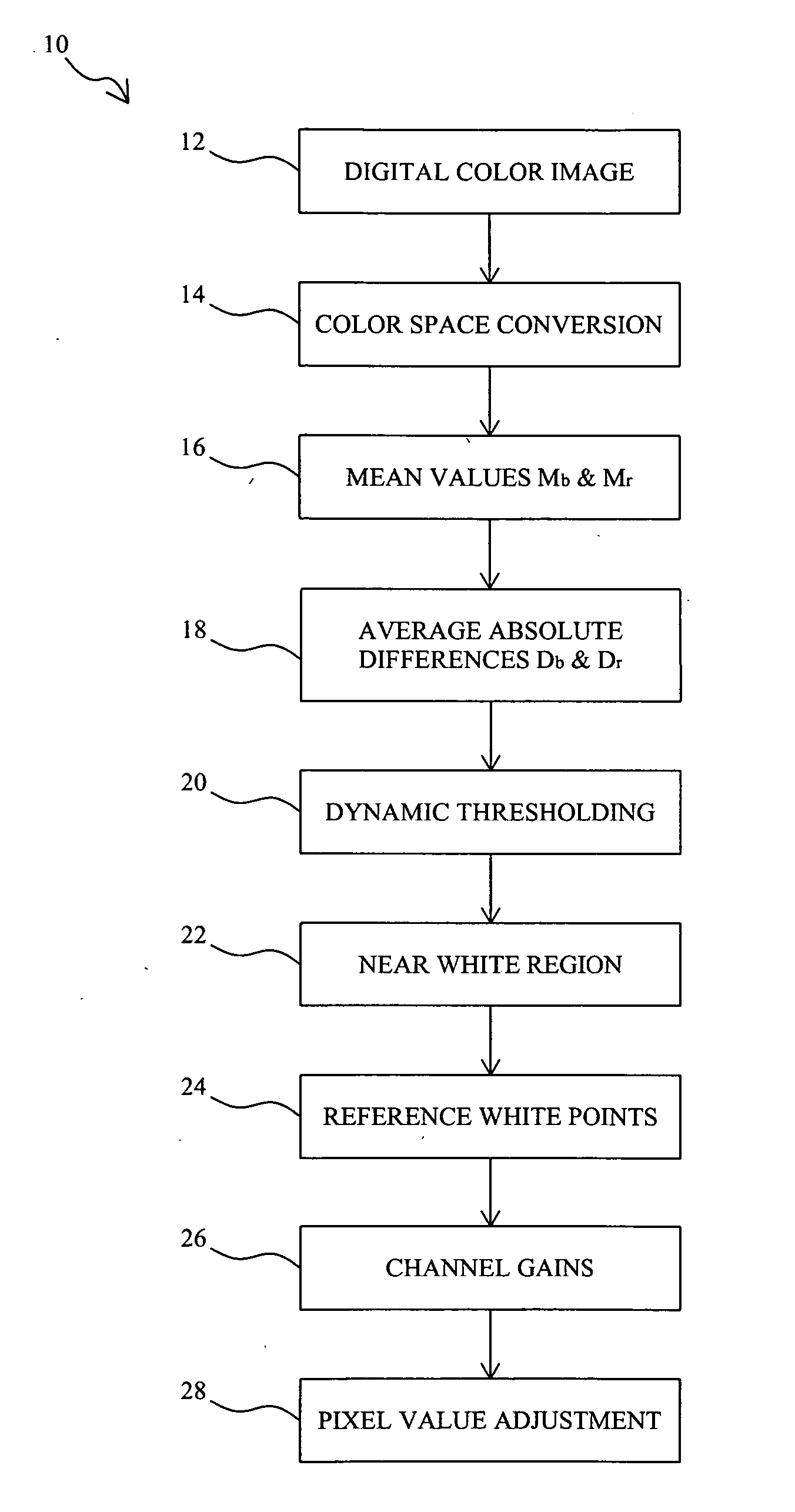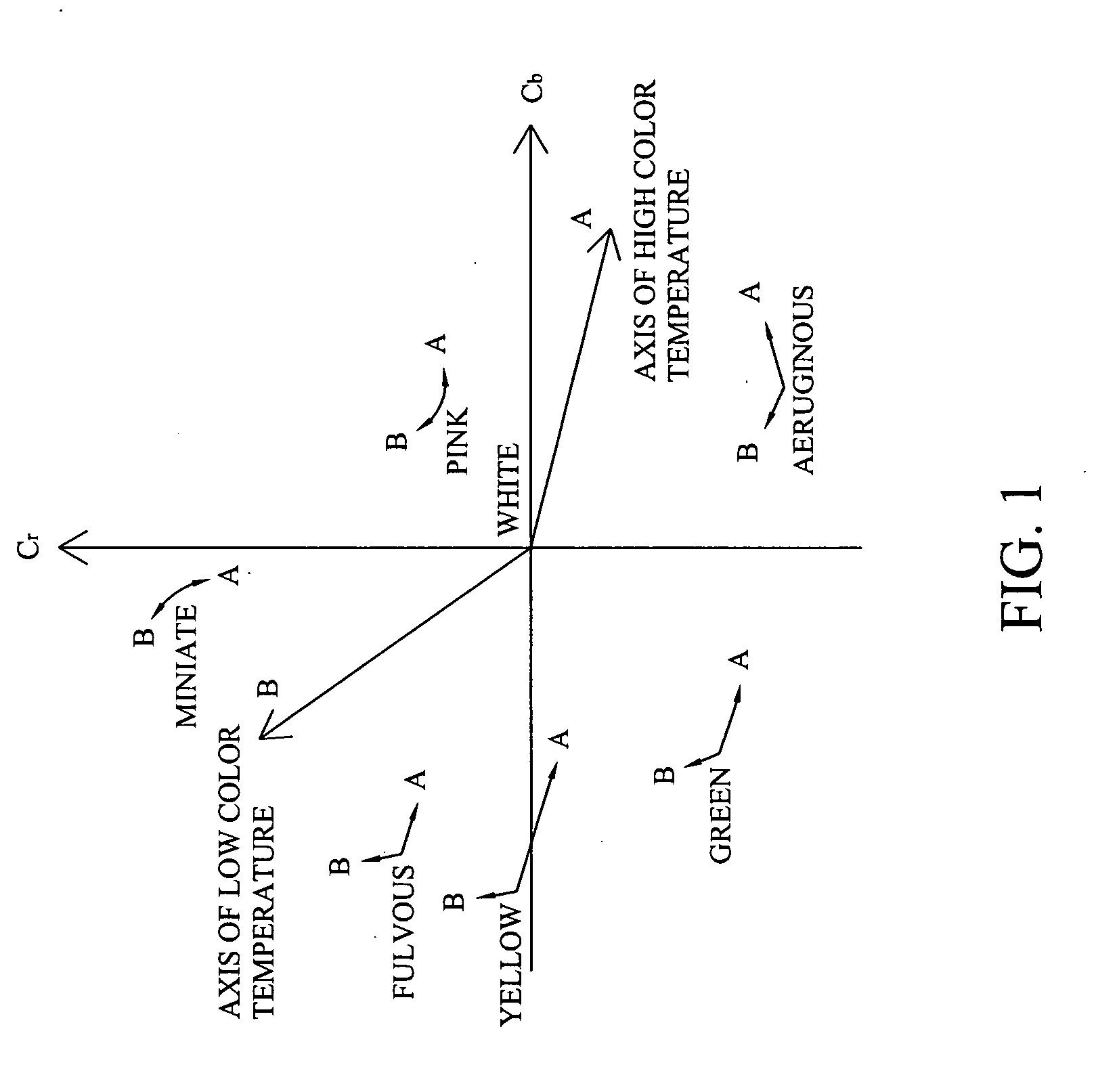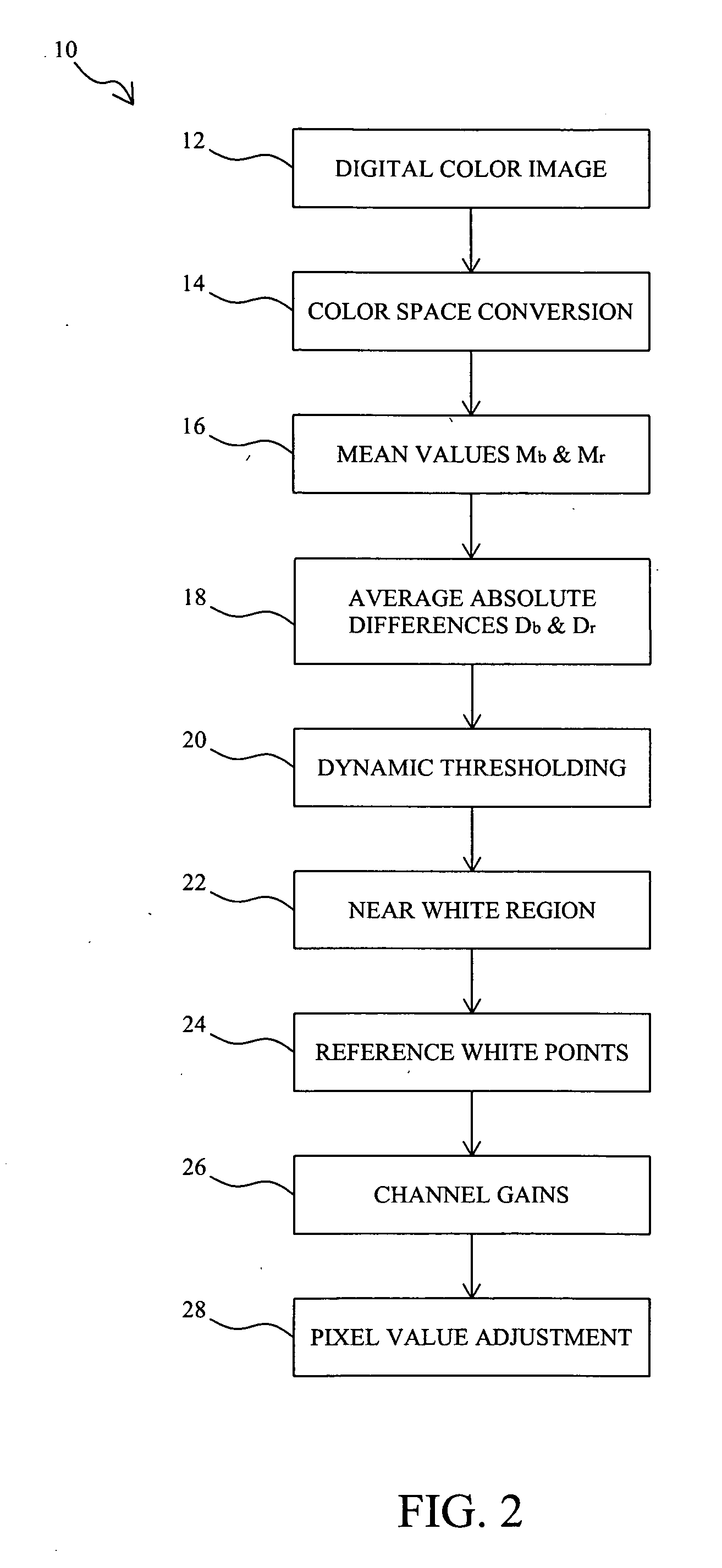Automatic white balance method adaptive to digital color images
a technology of automatic white balance and color image, applied in the field of image processing methods, can solve the problems of difficult to separate factors, difficult to determine grey values, difficult to estimate the density of the image, etc., and achieve the effect of enhancing the robustness of the proposed methods
- Summary
- Abstract
- Description
- Claims
- Application Information
AI Technical Summary
Benefits of technology
Problems solved by technology
Method used
Image
Examples
Embodiment Construction
[0019] Generally, a process for color constancy of a digital color image comprises the steps: (a) input of a raw or rare image, (b) illumination estimation from the image, (c) color adjustment in the image, and (d) output of the processed image. The image before being processed may be one generated by a digital camera, or obtained from a storage device, and may probably have been pre-processed by software tool or hardware equipment. In the illumination estimation step, as described above, variety of algorithms are developed, usually based on assumptions about distributions of reflectance. The detail processing in methods of the present invention will be illustrated by embodiments hereinafter. For the color adjustment, the Von Kries diagonal model is often used, and that model will be also employed in the exemplary methods hereinafter for illustrating the principles of the present invention. From an aspect of the present invention, the proposed methods focus on solving the drawbacks ...
PUM
 Login to View More
Login to View More Abstract
Description
Claims
Application Information
 Login to View More
Login to View More - R&D
- Intellectual Property
- Life Sciences
- Materials
- Tech Scout
- Unparalleled Data Quality
- Higher Quality Content
- 60% Fewer Hallucinations
Browse by: Latest US Patents, China's latest patents, Technical Efficacy Thesaurus, Application Domain, Technology Topic, Popular Technical Reports.
© 2025 PatSnap. All rights reserved.Legal|Privacy policy|Modern Slavery Act Transparency Statement|Sitemap|About US| Contact US: help@patsnap.com



